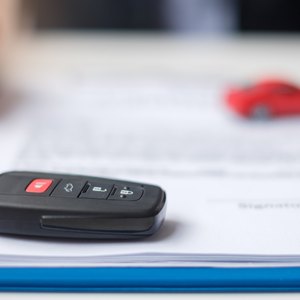
How long can you finance a car? The number of years you can finance a pre-owned vehicle basically depends on the policies of the lender. Until the vehicle shortages caused by the COVID-19 pandemic, the longest auto loan was usually 72 months. Some lenders are now offering 84- and 96-month contracts.
While longer loans reduce your monthly payments, they can cost you lots of extra money to pay off. Reviewing how long you can finance a used car will help you understand what your costs will be and what loan length might be best for you.
Car Loan Length Depends on the Economy
When the economy is weak and car sales are low, car dealers and lenders are more willing to offer you favorable terms, such as lower interest rates and longer loan terms. When the economy is good, lenders and dealers are in the driver’s seat, as it were.
Remember that the longer a loan company gives you credit at zero percent, the longer it takes to get its money, and it is making nothing on the loan because there’s no interest. Even low-cost loans aren’t that attractive. This is why it’s important to talk to a variety of used car sellers, including independent sellers, because regardless of the economy, they might have more flexibility to negotiate than a car dealership that represents a manufacturer.
Car Loan Length Depends on the Vehicle
Are you taking out a loan on a car that’s only 18 months old, or one that’s more than 10 years old? Long-term loans are harder to get if you’re trying to finance an older car, points out Experian. Think about it – the older the car, the more likely it is to fall apart after a few years, leaving the financing company little or nothing to repossess and sell if you default on the loan.
In addition, older, low-end used cars are much cheaper than newer, high-end models. Stretching a low starting price over eight years might not be worth it to the finance company.
Know Your Numbers
If an auto loan lender offers you a long-term loan, ask the lender to tell you the total payment number. For example, your monthly payments will be lower on a seven-year loan than on a five-year loan, but with the extra two years of car loan interest, you might end up paying thousands more for the vehicle.
You should also be aware of early payoff penalties and fees if you decide you want to end your contract sooner than later and pay off the loan. Look for loans that have little or no early payment penalties.
Impact on Your Credit
The longer your car loan, the longer it stays on your credit reports. Taking longer to pay off your car keeps your debt-to-credit ratio higher, which can lower your credit score. On the other hand, a longer loan can help your credit score.
An auto loan is installment credit as opposed to revolving credit (like a credit card). Your credit score considers your credit mix, with your credit mix accounting for 10 percent of your FICO score, according to myFICO.
In addition, the more car payments you make over the years, the more credit you get for on-time payments. These two reasons probably won’t bump your credit score enough to justify thousands of dollars in extra payments, but it’s good to know all of the factors associated with an auto loan and your personal finances.
References
Writer Bio
Steve Milano has written more than 1,000 pieces of personal finance and frugal living articles for dozens of websites, including Motley Fool, Zacks, Bankrate, Quickbooks, SmartyCents, Knew Money, Don't Waste Your Money and Credit Card Ideas, as well as his own websites.

